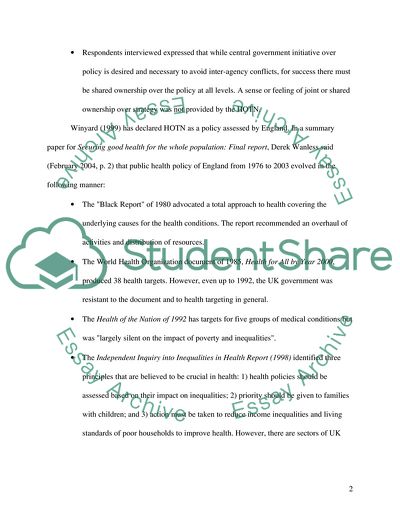Cite this document
(“A Review of the Health of the Nation White Paper of 1992 Research”, n.d.)
A Review of the Health of the Nation White Paper of 1992 Research. Retrieved from https://studentshare.org/health-sciences-medicine/1732128-3000-word-essay-critically-evaluating-the-health-of-the-nation-white-paper-1992
A Review of the Health of the Nation White Paper of 1992 Research. Retrieved from https://studentshare.org/health-sciences-medicine/1732128-3000-word-essay-critically-evaluating-the-health-of-the-nation-white-paper-1992
(A Review of the Health of the Nation White Paper of 1992 Research)
A Review of the Health of the Nation White Paper of 1992 Research. https://studentshare.org/health-sciences-medicine/1732128-3000-word-essay-critically-evaluating-the-health-of-the-nation-white-paper-1992.
A Review of the Health of the Nation White Paper of 1992 Research. https://studentshare.org/health-sciences-medicine/1732128-3000-word-essay-critically-evaluating-the-health-of-the-nation-white-paper-1992.
“A Review of the Health of the Nation White Paper of 1992 Research”, n.d. https://studentshare.org/health-sciences-medicine/1732128-3000-word-essay-critically-evaluating-the-health-of-the-nation-white-paper-1992.


